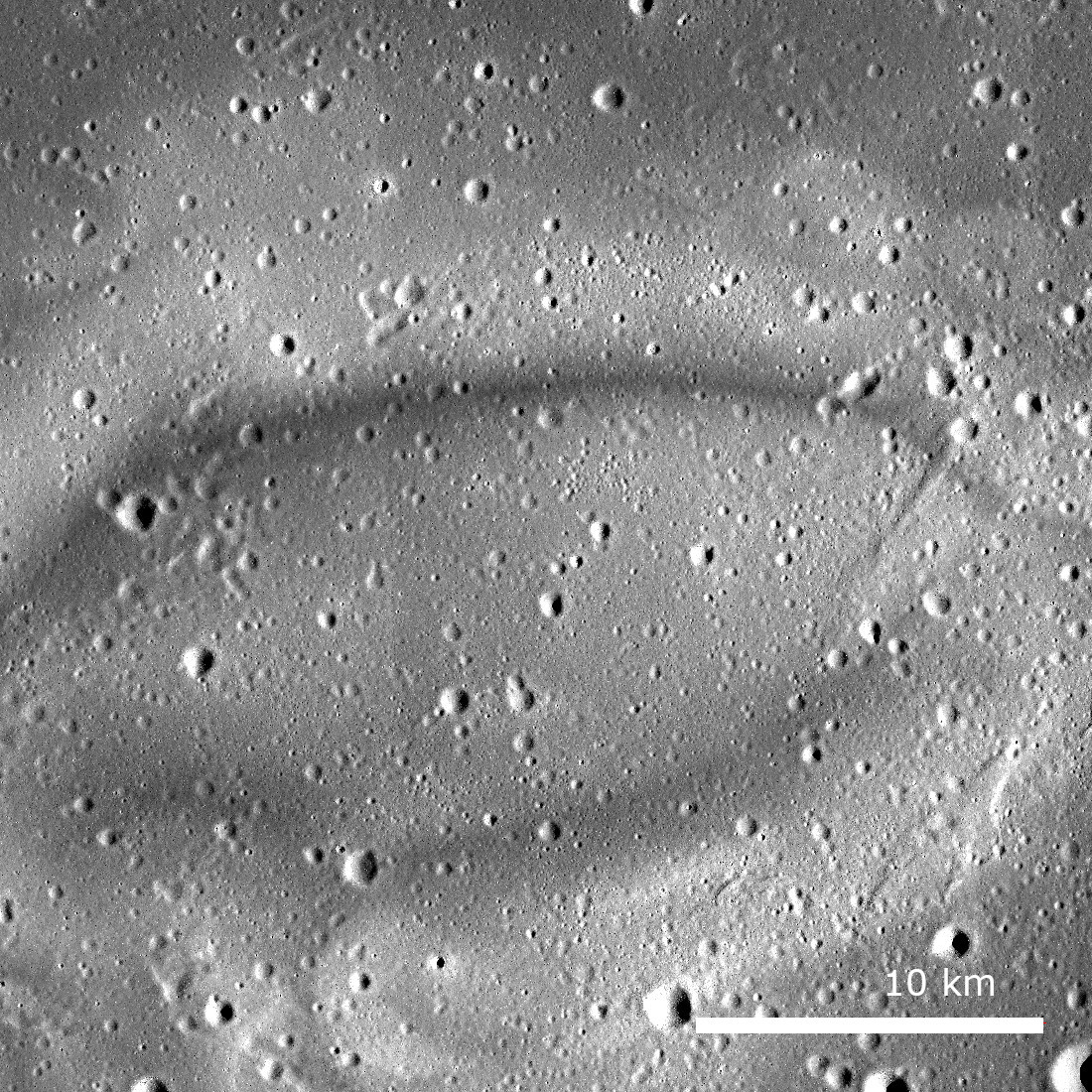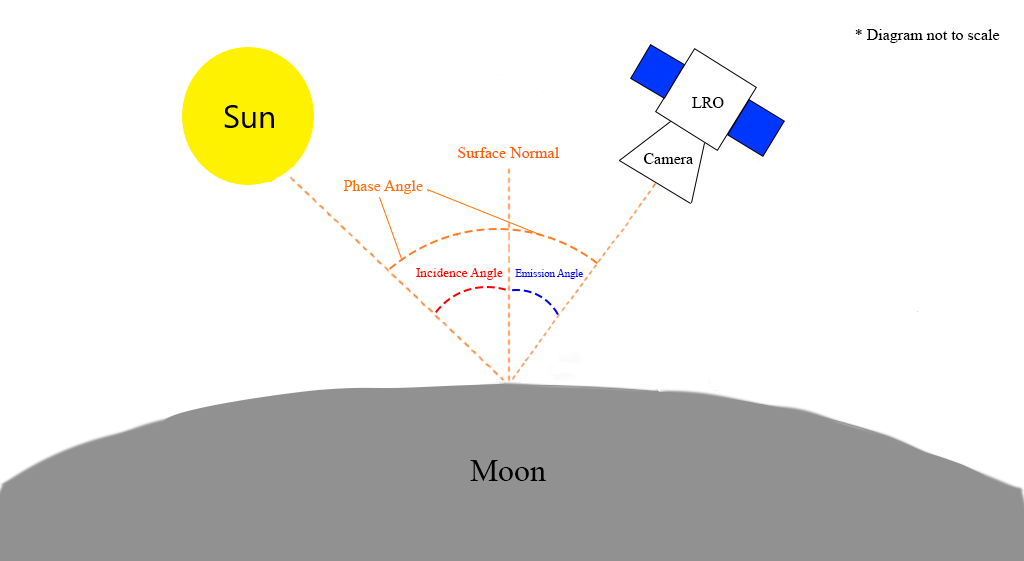
Lunar swirls are some of the most enigmatic geological features on the Moon, and how they formed is an open question. They are characterized by graceful high-albedo swirls and occur with unusual magnetic anomalies. The swirl known as Reiner Gamma is located in Oceanus Procellarum, a mare covering a vast region on the lunar nearside. NAC controlled mosaics of these strange features enable scientists to map swirl details down to the meter scale, and plan where future missions should land to study them up close.
Several models have attempted to explain the magnetic anomalies and the occurrence of swirls:
1. Comet impactors exposed bright, fresh material from below the surface and magnetized the surface.
2. Magnetic anomalies formed earlier in lunar history, which later led to the creation of the lunar swirls through deflection of the solar wind (analogous to how sunscreen protects our skin by deflecting UV rays from the Sun).
3. Localized magnetic fields sorted fine dust particles lofted by micrometeorite impacts, forming the bright swirl patterns.
Regardless of which model is correct, the result is that lunar swirls are bright, while the surrounding regions appear relatively dark. Thus, it may surprise you that the composition and topography of lunar swirls and the surrounding surface are roughly the same! Check out this post about Reiner Gamma to learn more about albedo.
The stark difference in albedo between a lunar swirl and its surroundings is further magnified depending on the Sun’s location relative to the surface. Depending on the location of the Sun and the Lunar Reconnaissance Orbiter (LRO) relative to the surface of the Moon, the surface reflectance varies greatly. The following diagram illustrates this effect:

In the Reiner Gamma Swirl mosaic shown below, the incidence angle is 70° (20° above the horizon).
In the next controlled mosaic below, the incidence angle is 14° (76° above the horizon). From this perspective, the dark basalt surface is in stark contrast to the Reiner Gamma Swirl. Through observations by the Lunar Reconnaissance Orbiter and other future investigations like Lunar Vertex, we can learn why lunar swirls like Reiner Gamma are bright and seek answers to broader questions about lunar geologic history.
Interested in how controlled mosaics are made? To learn more, check out this post: Featured Mosaics: Behind the Seams.
Learn more about Reiner Gamma and lunar swirls:
Reiner Gamma Constellation Region of Interest
Looking East Over Reiner Gamma
Wrinkled Reiner Gamma
Swirls Across the Moon
Download the NAC controlled mosaics:
Reiner Gamma (small incidence angle)
Reiner Gamma (large incidence angle)
Published by Seth Grieser on 26 May 2022